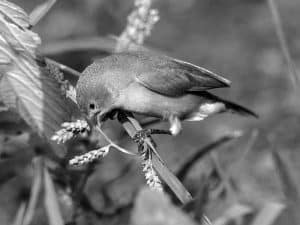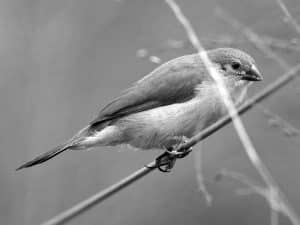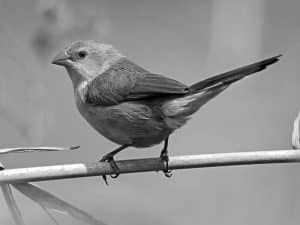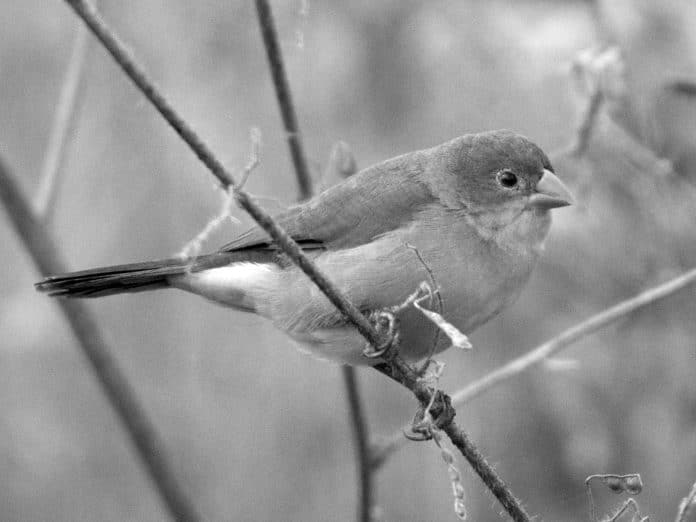Introduction to the Fawn-Breasted Waxbill
Nestled within the diverse avian tapestry of Tanzania lies a truly captivating species – the fawn-breasted waxbill. This diminutive yet stunning bird, with its delicate features and vibrant plumage, has long enchanted birdwatchers and nature enthusiasts alike. In this comprehensive guide, we’ll delve into the fascinating world of the fawn-breasted waxbill in Tanzania, exploring its habitat, physical characteristics, behavior, and the ongoing efforts to conserve this remarkable avian treasure.
Habitat and Distribution of the Fawn-Breasted Waxbill in Tanzania

The fawn-breasted waxbill is a species native to the African continent, with its primary range spanning across Tanzania, Kenya, and parts of Uganda. Within Tanzania, these birds thrive in a variety of habitats, including:
- Savanna woodlands
- Grasslands with scattered trees
- Riverine forests
- Cultivated areas, such as farmlands and gardens
The fawn-breasted waxbill’s adaptability has allowed it to flourish in both natural and human-modified environments, making it a common sight for birdwatchers exploring Tanzania’s diverse landscapes.
Physical Characteristics of the Fawn-Breasted Waxbill
The fawn-breasted waxbill is a small, delicate bird, with an average length of just 10-12 centimeters (4-5 inches) and a weight of around 8-12 grams. Its most distinctive feature is its vibrant plumage, which features a combination of soft, fawn-colored feathers on the breast and belly, contrasted by a striking black mask that extends from the bill to the eyes. The wings and back are a rich, chestnut-brown, while the rump and tail feathers are a vibrant scarlet-red. The beak is short and conical, perfectly adapted for the bird’s seed-based diet.
Behavior and Diet of the Fawn-Breasted Waxbill
The fawn-breasted waxbill is a social and active bird, often seen foraging in small flocks of 10-20 individuals. These flocks move quickly through their habitat, constantly on the lookout for their preferred food sources, which include:
- Various grass and weed seeds
- Small insects and spiders
- Nectar from flowering plants
The fawn-breasted waxbill is an accomplished acrobat, adeptly maneuvering through dense vegetation and clinging to the delicate stems of grasses and flowers as it searches for sustenance. Its social nature is also evident in its vocalizations, which include a variety of chirps, trills, and whistles used for communication within the flock.
Conservation Status of the Fawn-Breasted Waxbill in Tanzania
The fawn-breasted waxbill is currently classified as a species of “Least Concern” by the International Union for Conservation of Nature (IUCN). However, like many avian species, it faces ongoing threats to its habitat and population. Deforestation, urbanization, and agricultural expansion have the potential to disrupt the fawn-breasted waxbill’s preferred habitats, leading to a decline in its numbers.
In Tanzania, conservation efforts have focused on protecting the country’s diverse ecosystems, which serve as vital sanctuaries for the fawn-breasted waxbill and countless other species. National parks, such as Serengeti and Tarangire, as well as community-based conservation initiatives, play a crucial role in safeguarding the fawn-breasted waxbill’s future.
Best Places to Spot the Fawn-Breasted Waxbill in Tanzania

For birdwatchers and nature enthusiasts eager to catch a glimpse of the fawn-breasted waxbill, Tanzania offers a wealth of prime viewing locations. Some of the best places to spot this avian gem include:
- Serengeti National Park: The expansive grasslands and acacia woodlands of this iconic park provide an ideal habitat for the fawn-breasted waxbill.
- Tarangire National Park: Known for its diverse birdlife, Tarangire is a excellent destination to observe the fawn-breasted waxbill in its natural setting.
- Lake Manyara National Park: The diverse habitats surrounding this freshwater lake, including the lush riverine forests, are home to thriving populations of the fawn-breasted waxbill.
- Arusha National Park: This park’s mix of montane forests, grasslands, and wetlands offer excellent opportunities to spot the fawn-breasted waxbill.
Tips for Birdwatching and Photography of the Fawn-Breasted Waxbill
Observing and capturing the beauty of the fawn-breasted waxbill requires a keen eye and a patient approach. Here are some tips to enhance your birdwatching and photography experiences:
- Timing is Key: The fawn-breasted waxbill is most active during the early morning and late afternoon hours, when it is most likely to be foraging and engaging in social behaviors.
- Blend In: Wear muted, earth-toned clothing to blend in with your surroundings and minimize disturbance to the birds.
- Quiet Movements: Move slowly and quietly to avoid startling the birds, and use binoculars or a telephoto lens to get a closer view without invading their personal space.
- Patience and Persistence: It may take time and multiple visits to spot the elusive fawn-breasted waxbill, so be prepared to spend time in the field and observe patiently.
- Respect the Environment: Always follow local guidelines and regulations, and be mindful of your impact on the delicate ecosystems that the fawn-breasted waxbill calls home.
Interesting Facts about the Fawn-Breasted Waxbill
The fawn-breasted waxbill is a fascinating species with several unique characteristics:
- The bright red rump and tail feathers of the fawn-breasted waxbill are thought to play a role in courtship and social signaling within the flock.
- These birds are known to form strong pair bonds, with both the male and female participating in nest-building and chick-rearing.
- The fawn-breasted waxbill is a member of the Estrildidae family, which includes a diverse array of small, seed-eating finches found across Africa and Asia.
- Despite their diminutive size, fawn-breasted waxbills are remarkably resilient, able to thrive in a variety of habitats, including those modified by human activity.
Efforts for the Conservation and Protection of the Fawn-Breasted Waxbill

While the fawn-breasted waxbill is currently classified as a species of “Least Concern,” ongoing conservation efforts are crucial to ensuring its long-term survival. In Tanzania, various organizations and government agencies are working to protect the country’s diverse avian populations, including the fawn-breasted waxbill, through the following initiatives:
- Habitat Preservation: The establishment and expansion of national parks, nature reserves, and community-based conservation areas provide vital sanctuaries for the fawn-breasted waxbill and other threatened species.
- Eco-tourism and Environmental Education: Promoting responsible eco-tourism and educating local communities about the importance of biodiversity conservation helps to raise awareness and foster a sense of stewardship for the fawn-breasted waxbill and its habitat.
- Research and Monitoring: Ongoing scientific studies and population monitoring efforts help to track the status of the fawn-breasted waxbill and inform conservation strategies.
- Sustainable Land-use Practices: Encouraging sustainable agricultural and land-use practices that minimize habitat destruction can help to safeguard the fawn-breasted waxbill’s preferred environments.
To learn more about the fawn-breasted waxbill and how you can support its conservation, consider planning a birdwatching trip to Tanzania. Our team of experienced guides can help you create a customized itinerary that showcases the best habitats for spotting this delicate avian beauty. Contact us today to start planning your unforgettable Tanzania wildlife adventure!
Conclusion
The fawn-breasted waxbill is a true gem of Tanzania’s avian diversity, captivating all who have the privilege of witnessing its delicate beauty. Through ongoing conservation efforts and the dedication of birdwatchers and nature enthusiasts, this remarkable species can continue to thrive, enchanting future generations with its vibrant plumage and captivating behaviors. As you explore the diverse landscapes of Tanzania, keep your eyes peeled for the fawn-breasted waxbill – a true testament to the wonders of the natural world.

































